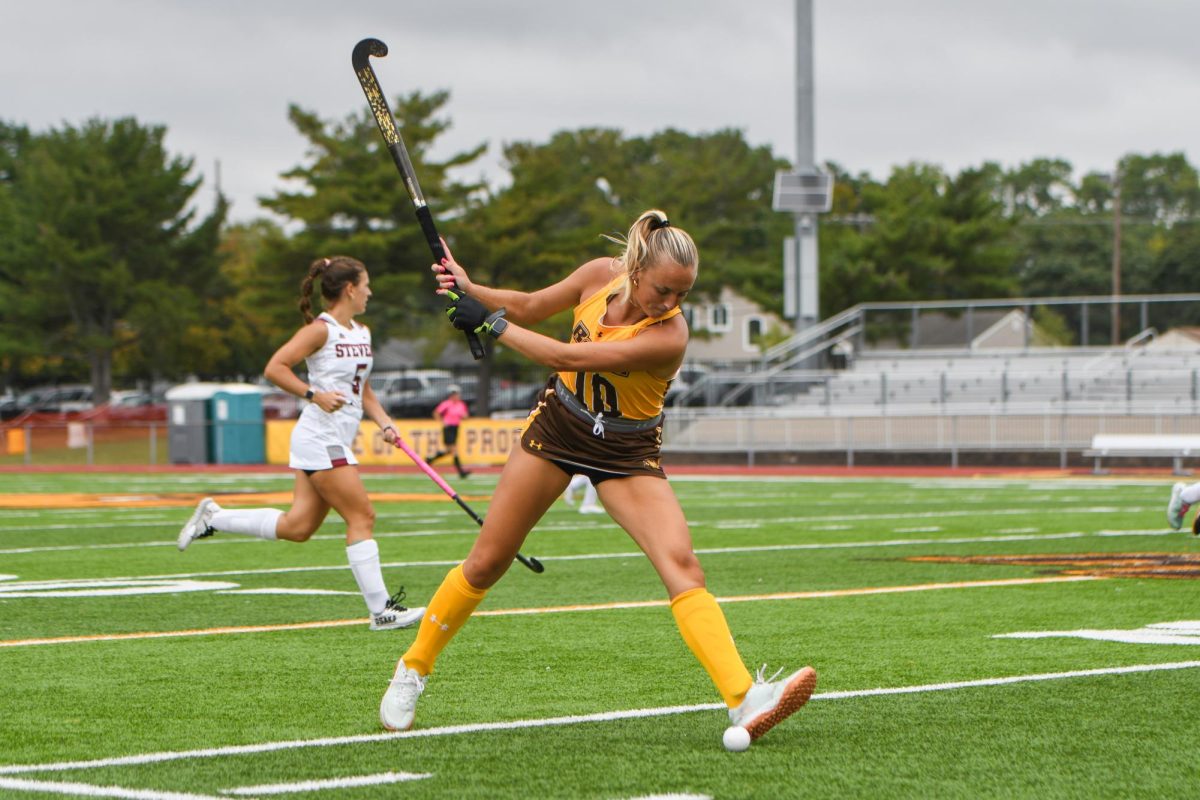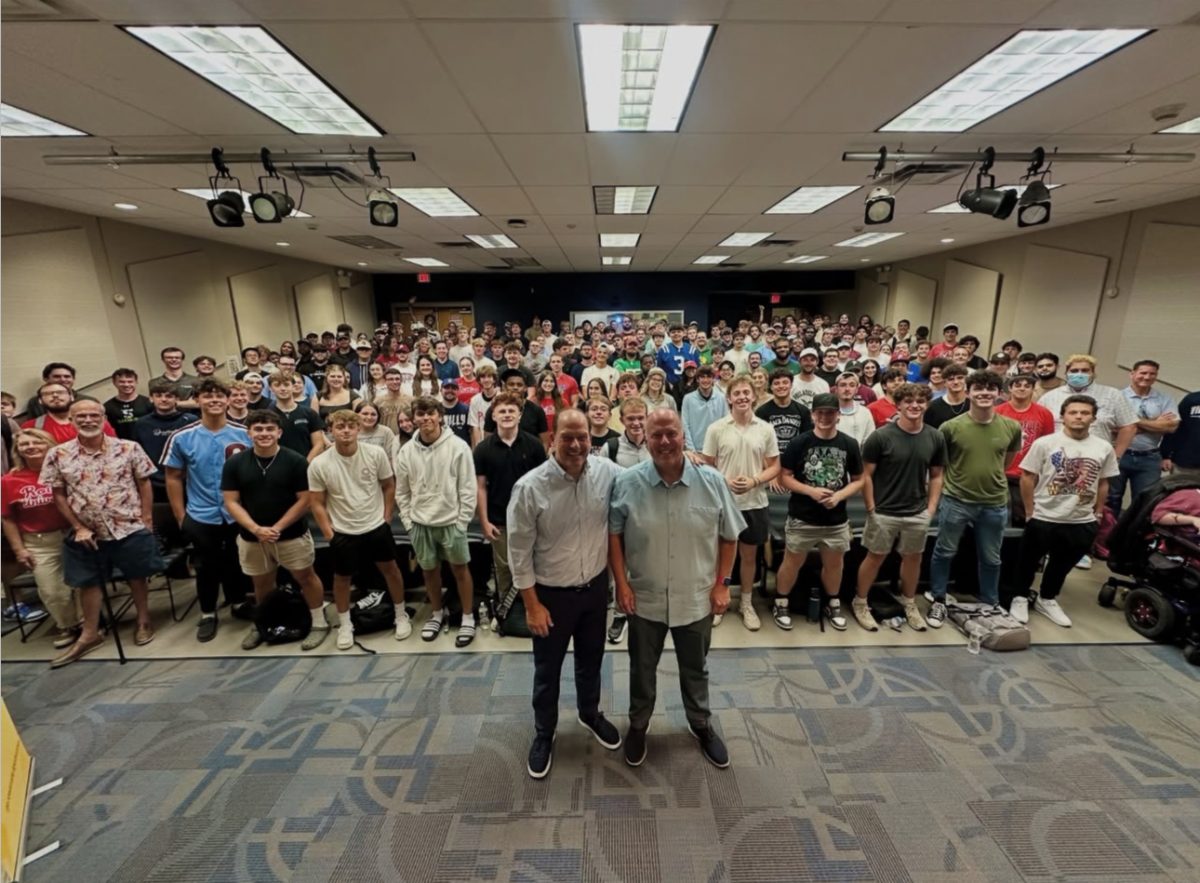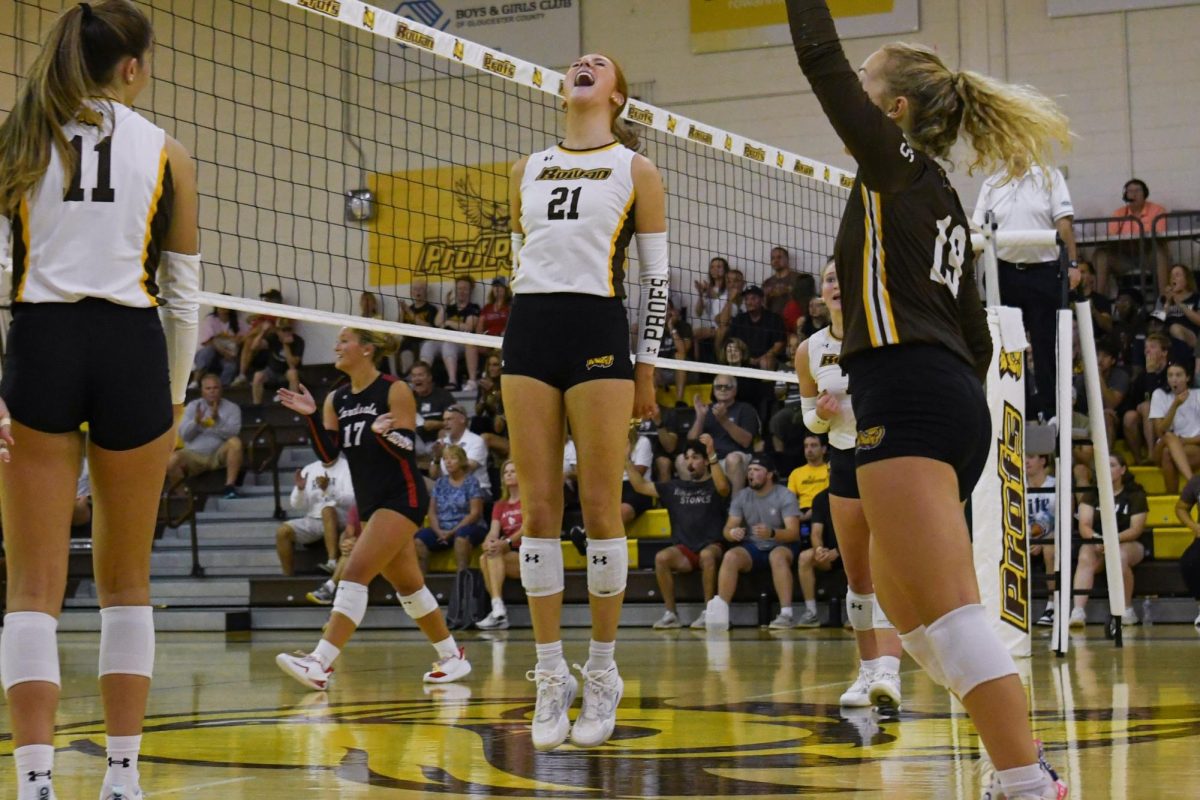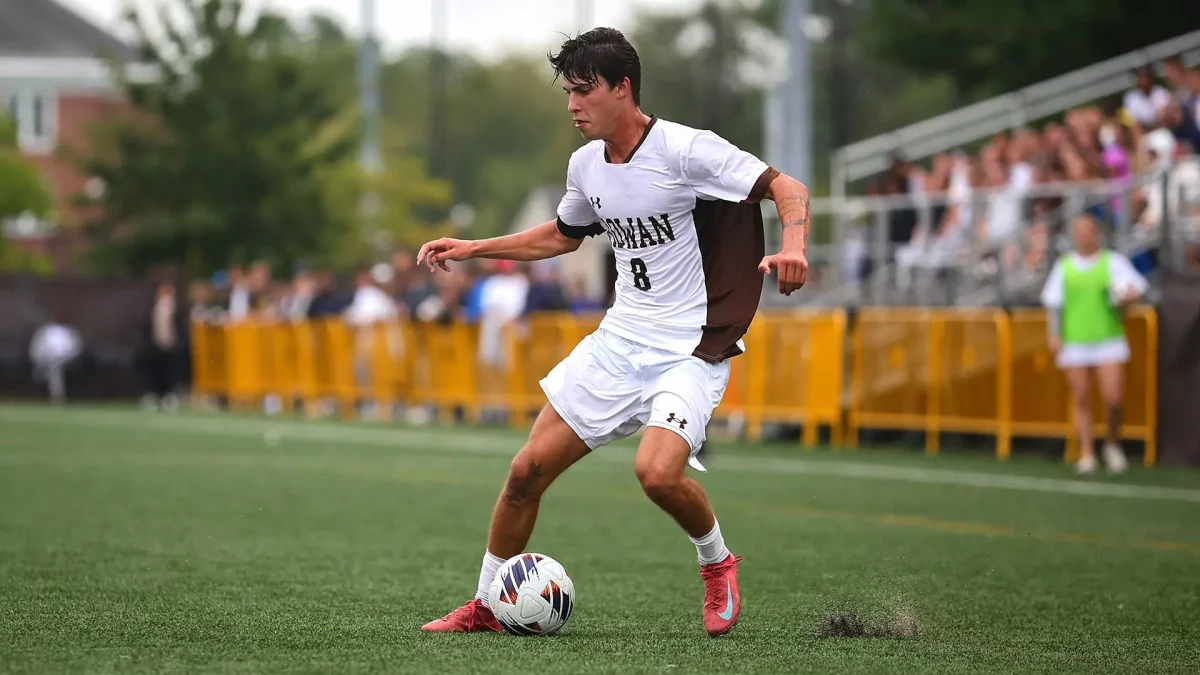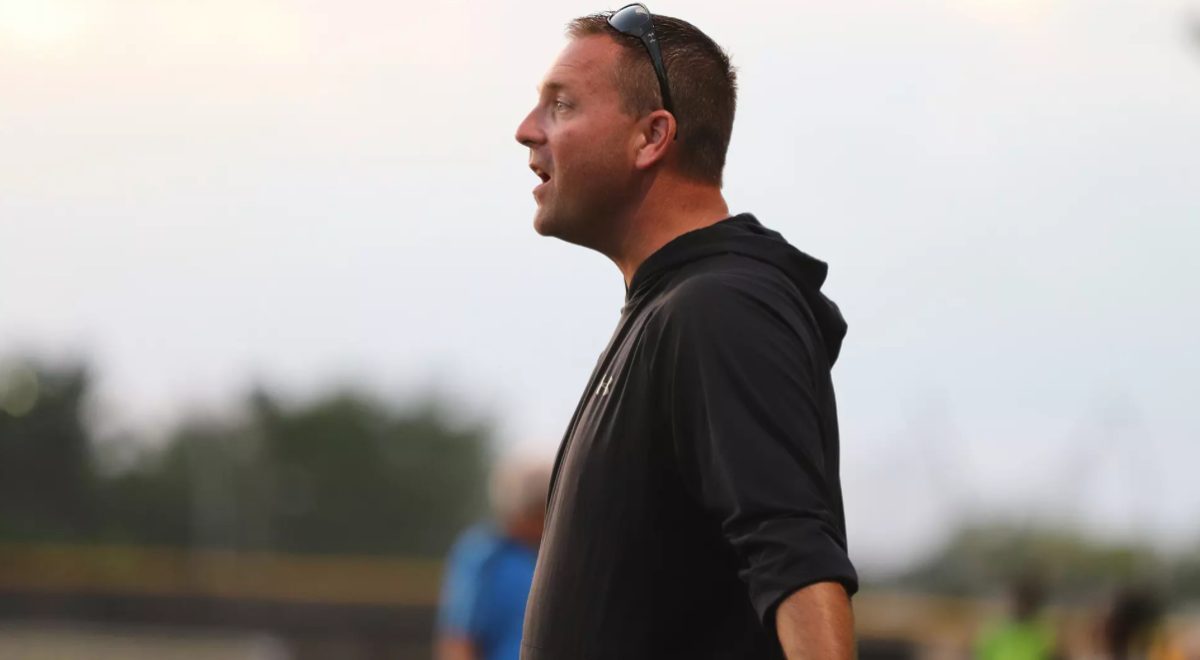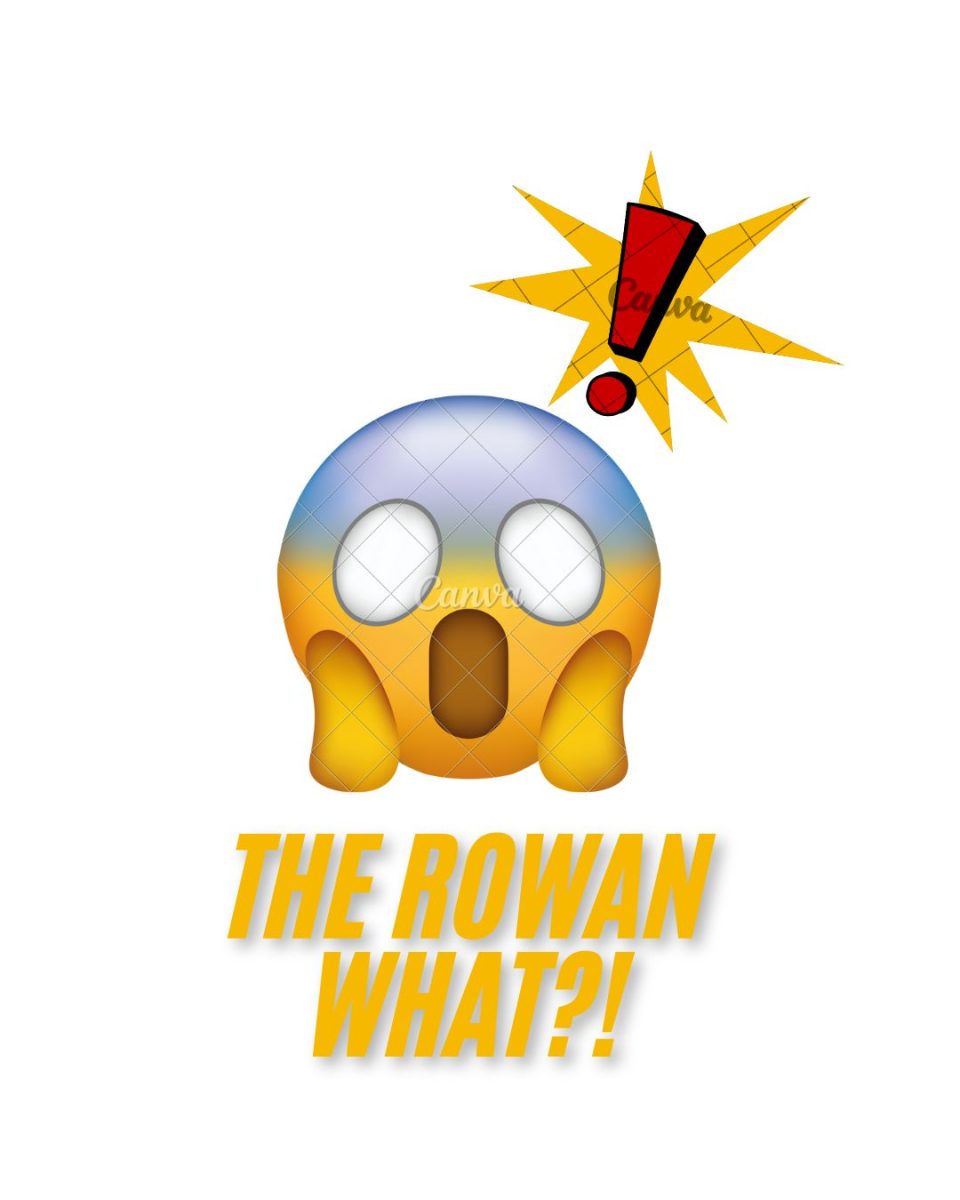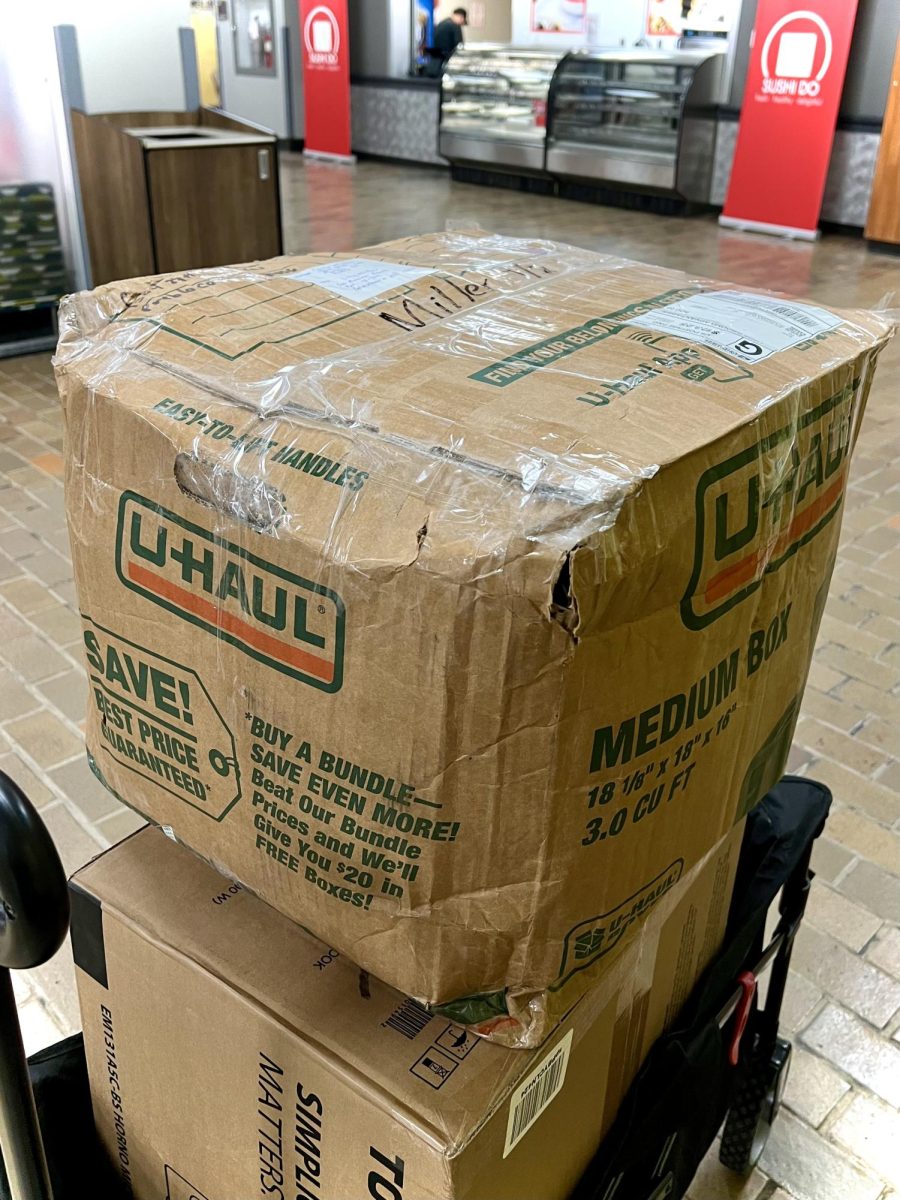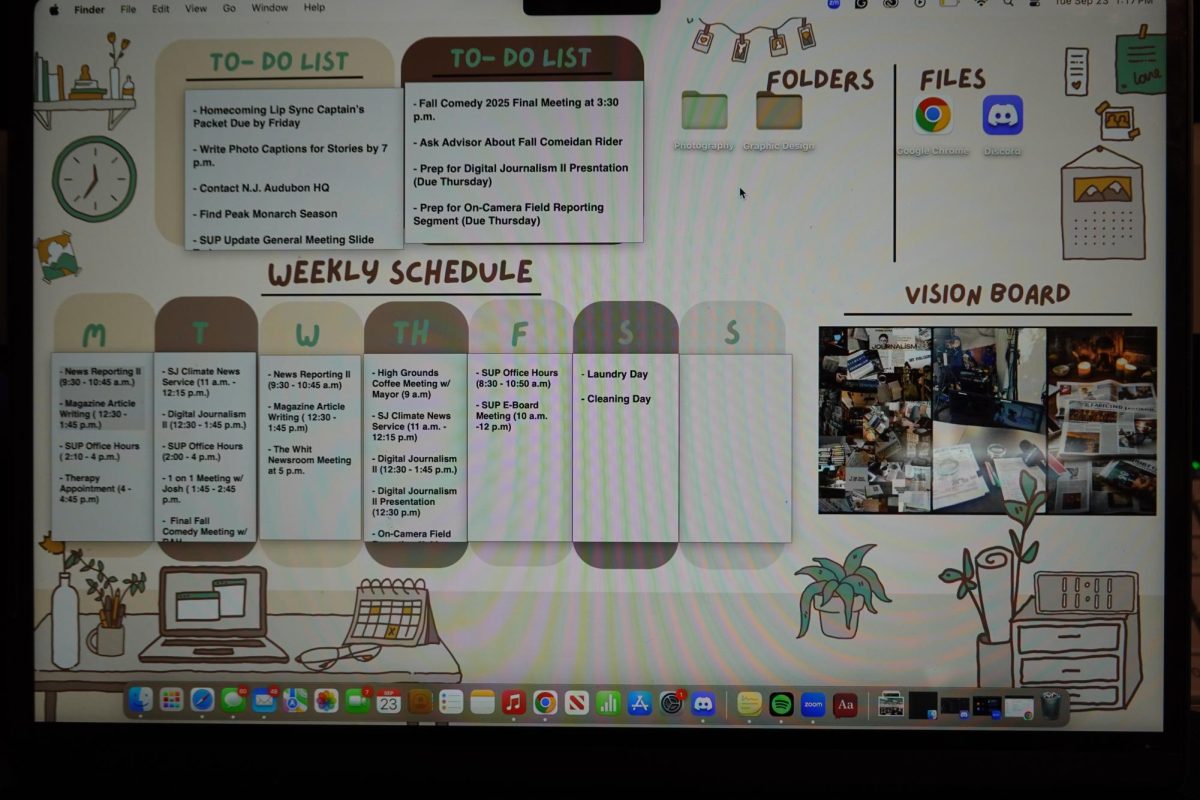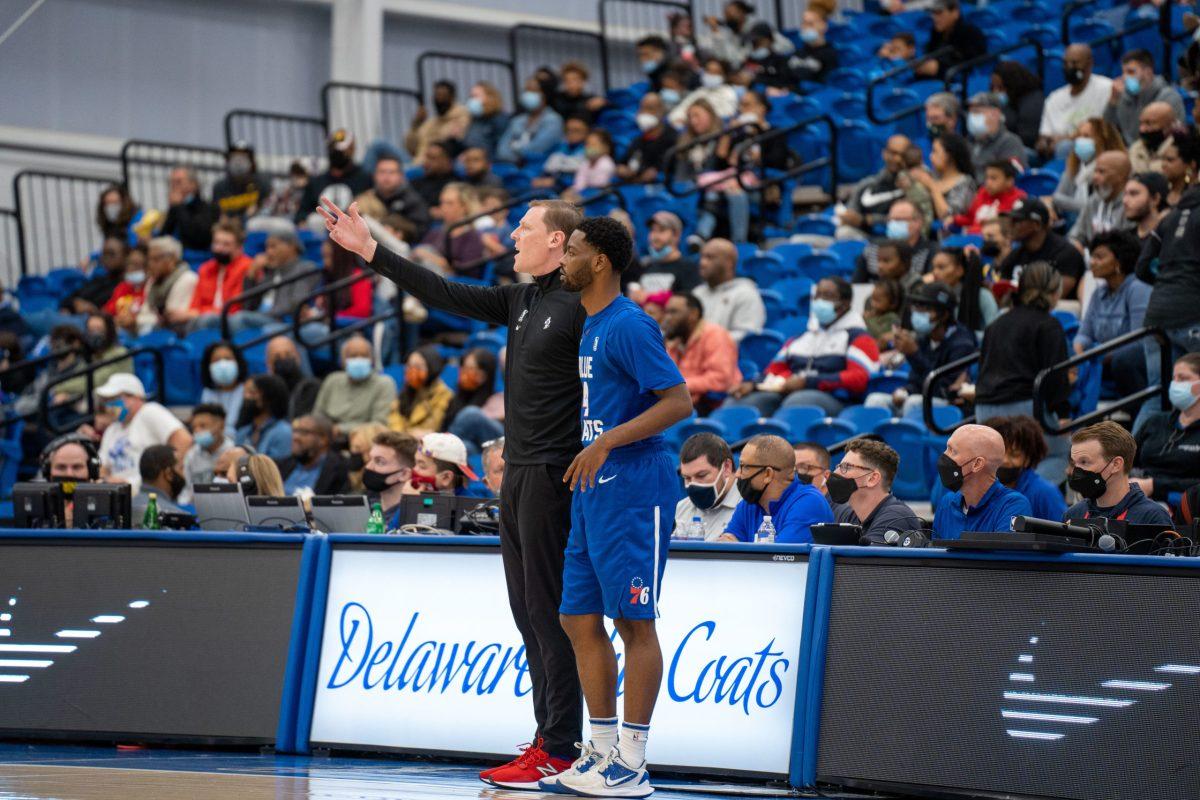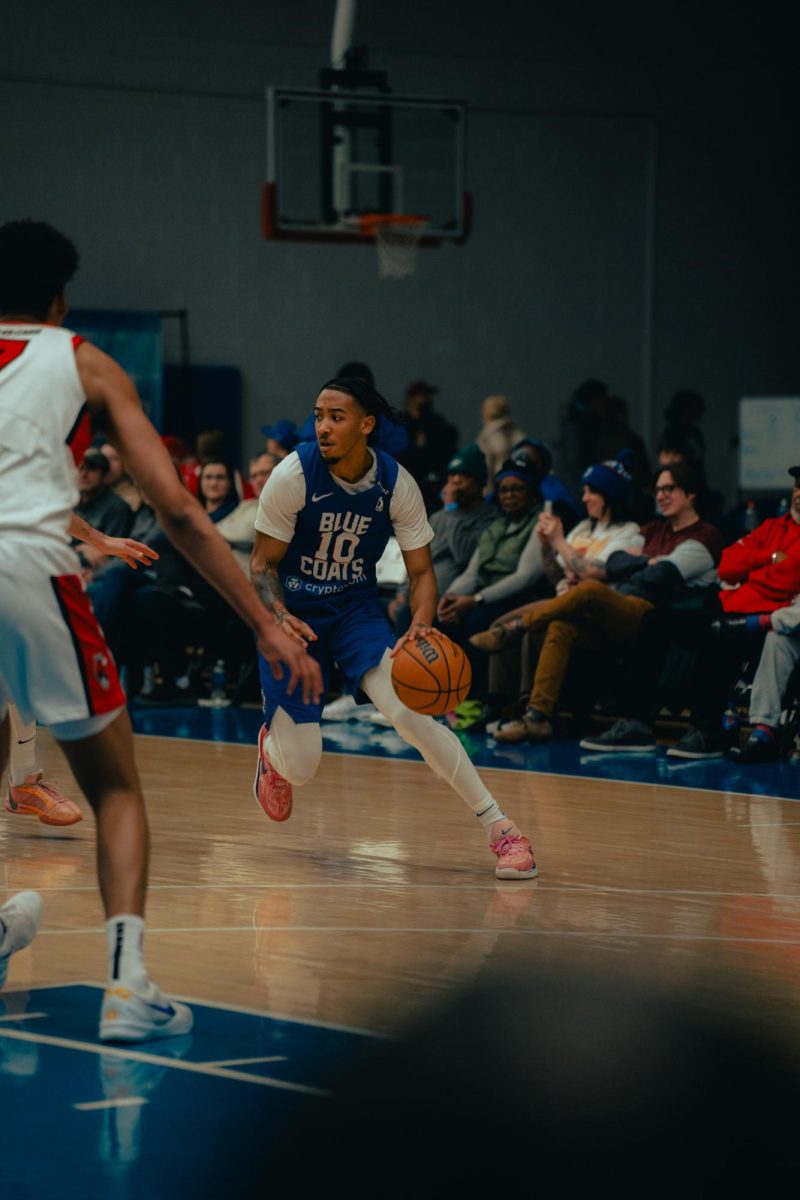The Delaware Blue Coats tipped off their 2021-22 season with a huge home victory over the Long Island Nets last Saturday night. The final score was 114-100 after the Coats took the lead at the end of the first quarter and maintained it throughout the rest of the game.
The victory was newly-hired Head Coach Coby Karl’s first win with the Blue Coats, kickstarting a new era of his career. Prior to this season, Karl was the head coach of the G League’s South Bay Lakers for five years.
While with the Lakers, Coach Karl was effective in utilizing the “big man” as a key part of his coaching philosophy. His system has helped produce success for forwards and centers such as Ivaca Zubac, who is now a regular NBA starter, and Justin Harper, who received a G League All Star selection under Coach Karl.
While Karl has had taller players before, the current Blue Coats roster is constructed of players that do not have a height advantage over many teams. The tallest player on the team is Braxton Key, who stands at 6’8” tall. Forward Charlie Brown Jr. is 6’6”, forward Aaron Henry is 6’5”, and guard Jarron Cumberland is 6’5”.
Henry didn’t play on Saturday night because he and Jaden Springer were designated to join the 76ers on their road trip to Chicago after Philadelphia couldn’t play a significant number of athletes, due to positive COVID-19 results.
“I know Jaden Springer and Aaron Henry were with us for two weeks and then the ‘G League’ thing happened,” Coach Karl said. “They got called up to Chicago, and we had to fill that void. I thought everyone that stepped up played a hell of a game.”
Despite losing Henry in a frontcourt that already lacks size, the Blue Coats still pulled out a victory over the larger Nets, who have seven players 6’6” or taller. Even while facing a massive height disadvantage, Delaware was still neck-and-neck with Long Island in rebounds. They finished with 55 total team rebounds compared to the Nets’ 54.
Throughout the game, Coach Karl had to use the “small ball” philosophy and turn to a lineup that consisted of only players 6’5” or shorter. This was especially prevalent when starting center 6’8” Braxton Key was not on the court at times.
The “small ball” lineup is a technique that Karl might consistently incorporate into his gameplan, depending on the construction of the roster, Karl might be forced.
“I think it’s a little bit of both,” Coach Karl said. “That’s what we’ve been playing with in practice. We have a smaller team.”
While he did note that there is room left for improvements, Karl credited his team for their toughness in the win.
“I thought they showed a lot of things that we can build on,” Coach Karl said. “Part of that was some of those grittier, smaller players figuring out a way to rebound, get stops and be physical.”
One of the key players that found success in Karl’s system and contributed to the big win was Shaq Harrison. The 6’4” guard scored 29 total points, but Harrison was also involved as a rebounder and defender. He finished with seven rebounds and was an active force on the glass.
“I’ve always prided myself on being a rebounding guard,” Harrison said. “Using my length and my athleticism helps me get the ball into my hands. In my mind, I can push it and play to my strengths.”
In the current system that the Blue Coats are running, players like Harrison, Haywood Highsmith and Trae-Deon Hollins are expected to contribute more than just scoring. Without signs of the team making any significant roster changes, Coach Karl is going to have to continue to rely on his athletic guards for the bulk of the rebounding.
The Blue Coats will hit the road on Nov. 12 to Maine to take on the Celtics. Will Coach Karl continue to roll with the current system he has installed? Will the Blue Coats continue to find success in a scheme that is so demanding of its backcourt talent?
For comments/questions about this story tweet @TheWhitSports.



















